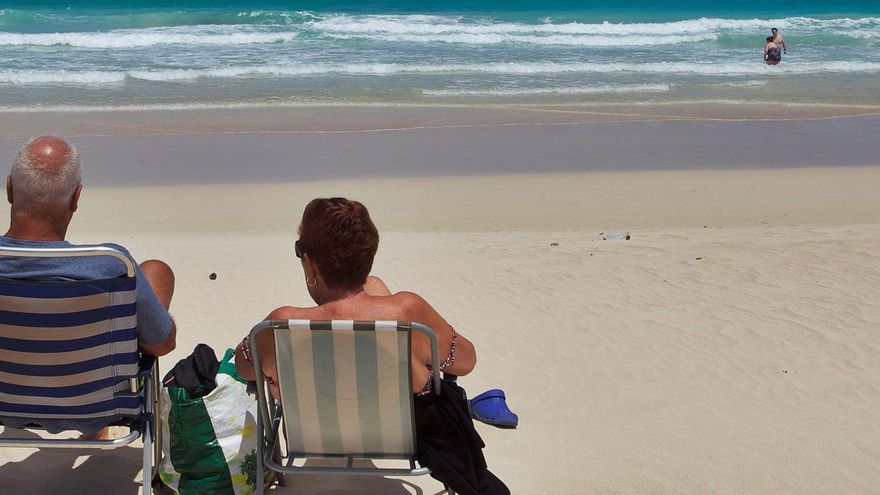
The other virus that hits the Canary Islands, the one that affects the economy, household pockets and to the company savings banks, it is proving more violent than in the rest of the country. Not surprisingly, the zero tourism that the pandemic has brought with it is suffered in the Archipelago in a special way due to its high dependence on the spending that the English, Germans or Dutch make during their vacations in the region. That is why not all the islands have been equally damaged by the socioeconomic effects of covid-19.
The most dependent if possible on the tourism business – the two capital cities, Tenerife and Gran Canaria, and the two most eastern, Fuerteventura and Lanzarote– these are the ones that have experienced the greatest losses in their respective GDP. However, if there is an island where the crisis is raging with particular fury, it is Fuerteventura. So much so that in 2020, year I of the pandemic, the Majoreros saw their Gross Domestic Product (GDP) plummet to a whopping 30.1% compared to 2019. In other words: for every hundred euros that the productive fabric of Fuerteventura had generated in 2019, last year it hardly generated 69 euros and 90 cents. A sinking of which there is no precedent in the modern history of the Archipelago.
This is shown by the study The GDP of the Canary Islands and its island economies, a work by the professor at the University of La Laguna Domingo Jesús Lorenzo Díaz edited by the Royal Economic Society of Friends of the Country of Tenerife, the institution directed by José Gómez Soliño, who was rector of the Lagunera alma mater between 1999 and 2003. The investigation places Fuerteventura as the worst hit and El Hierro, the smallest and westernmost of the Islands, as the least. And this even though El Hierro lost 10.2% of its GDP in 2020, which gives an idea of the damage caused by the virus in the economy. Between both islands, and from highest to lowest drop in their respective GDP, there are Lanzarote, which left 27.9% of its Gross Domestic Product last year; Tenerife, where the macroeconomic indicator par excellence fell by 20.7%; Gran Canaria, with a fall of 18.9%; La Gomera, with a reduction of 17.2%; and La Palma, with -13%.
The westernmost islands, due to the lower weight of the tourism business in their productive fabrics, are thus the ones that lost the least GDP in the last year.
















